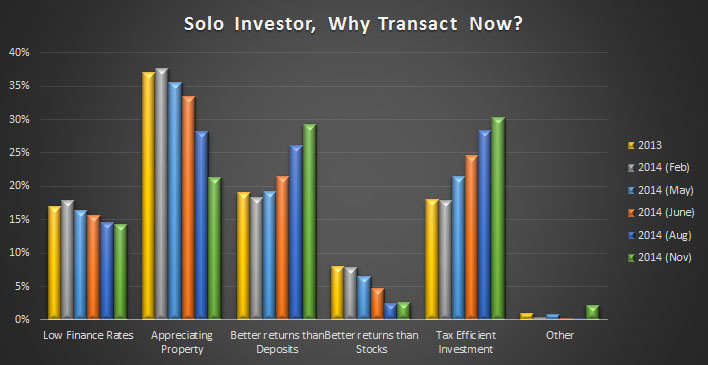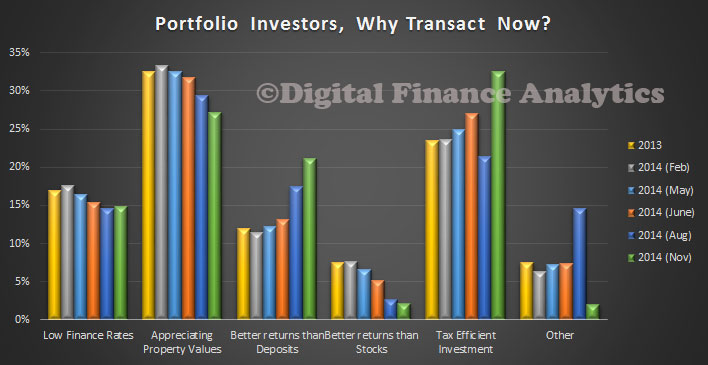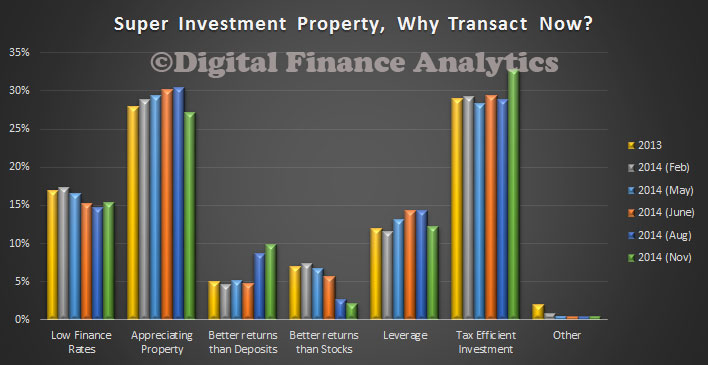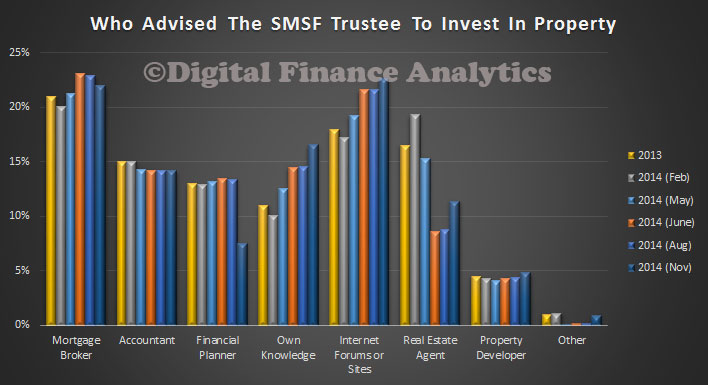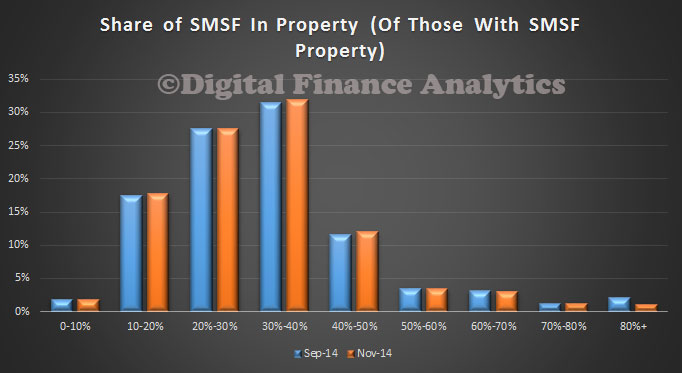The FSI report discusses the alignment of consumer outcomes and financial advice firms, questions “general financial advice” and adviser qualification. The report recommends that the term “general advice” be changed to better reflect what is intended and that the financial adviser or mortgage broker should be required to clearly explain their association with the product issuer. In addition, advisers should be better qualified and cultural misalignment addressed.
The GFC brought to light significant numbers of Australian consumers holding financial products that did not suit their needs and circumstances — in some cases resulting in severe financial loss. Previous collapses involving poor advice, information imbalances and exploitation of consumer behavioural biases have affected more than 80,000 consumers, with losses totalling more than $5 billion, or $4 billion after compensation and liquidator recoveries. The changes outlined in this report should also significantly improve consumer confidence and trust in the financial system.The most significant problems related to shortcomings in disclosure and financial advice, and over-reliance on financial literacy. The changes introduced under the Future of Financial Advice (FOFA) reforms are likely to address some of these shortcomings; however, many products are directly distributed, and issues of adviser competency remain.
The current regulatory framework addresses advice on financial products. The framework makes an important distinction between personal and general advice:
• Personal advice takes account of a person’s needs, objectives or personal circumstances, whereas general advice does not.
• General advice includes guidance, advertising, and promotional and sales material highlighting the potential benefits of financial products. It comes with a disclaimer stating that it does not take a consumer’s personal circumstances into account.
However, consumers may misinterpret or excessively rely on guidance, advertising, and promotional and sales material when it is described as ‘general advice’. The use of the word ‘advice’ may cause consumers to believe the information is tailored to their needs. Behavioural economics literature and ASIC’s financial literacy and consumer research suggests that terminology affects consumer understanding and perceptions. Often consumers do not understand their financial adviser’s or mortgage broker’s association with product issuers. This association might limit the product range an adviser or broker can recommend from. Of recently surveyed consumers, 55 per cent of those receiving financial advice from an entity owned by a large financial institution (but operating under a different brand name) thought the entity was independent.
The Inquiry believes greater transparency regarding the nature of advice and the ownership of advisers would help to build confidence and trust in the financial advice sector. In particular, ‘general advice’ should be replaced with a more appropriate, consumer-tested term to help reduce consumer misinterpretation and excessive reliance on this type of information. Consumer testing will generate some costs for Government, and relabelling will generate transitional costs for industry — although these are expected to be small. The Inquiry believes the benefits to consumers from clearer distinction and the reduced need for warnings outweigh these costs.
Although stakeholders have provided little evidence of differences in the quality of advice from independent or aligned and vertically integrated firms, the Inquiry sees the value to consumers in making ownership and alignment more transparent. In particular, these disclosures should be broader than Financial Services Guide and Credit Guide rules currently require, and could include branded documents or materials. The Inquiry believes the benefits to consumers would outweigh the transitional costs to industry of effecting branding changes.
In addition, the report highlights the need to raise the competency of financial advice providers, and introduce a register of advisers. The register was announced recently but we argued it was not alone sufficient.
The Interim Report observed that affordable, quality financial advice can bring significant benefits for consumers. However, according to the Parliamentary Joint Committee on Corporations and Financial Services (PJCCFS), “the major criticism of the current system is that licensees’ minimum training standards for advisers are too low, particularly given the complexity of many financial products”. This affects confidence and trust in the sector and can prevent consumers from seeking financial advice.
A number of high-profile cases where consumers have suffered significant detriment through receiving poor advice, and a series of ASIC studies, have revealed issues with the quality of advice. For example, ASIC’s report on retirement advice found that only 3 per cent of Statements of Advice were labelled ‘good’, 39 per cent were ‘poor’ and the remaining 58 per cent ‘adequate’. Although these cases and many of these studies occurred before the FOFA reforms to improve remuneration structures, this is not the only issue. Adviser competence has also been a factor in poor consumer outcomes. ASIC’s review of advice on retail structured products found insufficient evidence of a reasonable basis for the advice in approximately half of the files.
Under the current framework, ASIC guidance sets out the minimum knowledge, skills and education for people who provide financial advice to comply with the Corporations Act 2001 and licence conditions. The training standards vary depending on whether the adviser is dealing with Tier 1 or Tier 2 financial products. As a minimum, current education standards are broadly equivalent to a Diploma under the Australian Qualifications Framework for Tier 1 products, and to a Certificate III for Tier 2 products.
Register of advisers
As the PJCCFS stated, “the licensing system does not currently provide a distinction between advisers on the basis of their qualifications, which is unhelpful for consumers when choosing a financial adviser”. ASIC currently has a public record of financial advice licensees and is notified of authorised representatives. However, ASIC has little visibility of employee advisers, or access to the type of information that an enhanced register could hold, such as length of experience and employment history. ASIC argues that transparency about advisers through an enhanced register is an important piece missing from the regulatory framework. Most stakeholders support introducing such an enhanced register.
Conclusion
The benefits of improving the quality of advice are significant. To achieve this, the Inquiry believes that minimum competency standards should be increased and the current Government process to review these standards should be prioritised.
In advance of the completion of the Government process, some adviser firms have recently announced they are increasing their own qualification requirements. However, low minimum competency standards have been a feature of the industry for a substantial length of time, and change is needed across the board. Many stakeholders are highly concerned about the low minimum education standards of financial advisers, with most supporting lifting education requirements to degree level.
Internationally, Singapore and the United Kingdom are seeking to raise minimum competency standards. The Inquiry is of the view that Australia should set high standards in comparison with peer jurisdictions. Although the Inquiry does not recommend a national exam for advisers, this could be considered if issues in adviser competency persist. For individual advisers and firms, the cost of undertaking further and ongoing education would be significant. However, this is a necessary transition to move towards higher standards of competence and would deliver long-term benefits for consumers. The cost would be mitigated by an appropriate transition period. Raising the minimum competency standards may increase the cost of advice for consumers. However, various cost effective market developments are emerging, such as scaled or limited advice and using technology to deliver advice.61 The Inquiry encourages advisers to develop new models for delivering advice more cost effectively to sit alongside existing comprehensive face-to-face advice models.
The requirement for higher education standards may cause some existing advisers to exit the industry and may deter some from entering, potentially causing an ‘advice gap’ for some consumers. Transitional arrangements to give advisers appropriate time to upgrade their qualifications would help manage this risk. Raising standards would also increase confidence and trust in the industry, encouraging more individuals to choose financial advisory services as a career path, and increasing the supply of financial advisers.
The Inquiry has not made a recommendation in relation to mortgage brokers. However, it considers that ASIC should continue to monitor consumer outcomes in this area and the performance of the industry in relation to its obligations under the National Consumer Credit Protection Act 2009. In relation to the register of advisers, the Inquiry supports the establishment of the enhanced register to facilitate consumer access to information about financial advisers’ experience and qualifications and improve transparency and competition. Further consideration could be given to adding other fields, such as determinations by the FOS.62 The register should be designed to take account of possible future developments in automated advice and record the entity responsible for providing such services.
At the heart of the matter is the question of aligning the interests of financial firms and consumers. This is a question of culture.
Recent cases of poor financial services provision raise serious concerns with the culture of firms and their apparent lack of customer focus. Research in 2009 suggested that financial firms may not be implementing systems and procedures within their organisations that promote ethical culture and integrate governance, risk management and compliance frameworks. In 2011–12, approximately 94 per cent of ASIC’s banning orders involved significant integrity issues, where the alleged conduct would breach professional and ethical standards and/or the conduct provisions in the Corporations Act 2001. The remaining 6 per cent of cases involved competency issues. The Inquiry considers that cases of consumer detriment and poor advice reflect organisational cultures that do not focus on consumer interests. Such cultures promote short-term commercial outcomes over longer-term customer relationships. This has contributed to a lack of consumer confidence and trust in the system. In research undertaken by Roy Morgan, only 28 per cent of participants gave financial planners ‘high’ or ‘very high’ ratings for ethics and honesty, and trust in bank managers was held by just 43 per cent of participants. In addition, ASIC found only 33 per cent of stakeholders agreed that financial firms operate with integrity.
Banning power
ASIC has observed phoenix activity in financial firms, where senior people from a financial firm with poor operating practices may establish a new business or move to an alternative firm. Currently, ASIC can prevent a person from providing financial services, but cannot prevent them from managing a financial firm. Nor can ASIC remove individuals involved in managing a firm that may have a culture of non-compliance.
Conclusion
To build confidence and trust in the financial system, financial firms need to be seen to act with greater integrity and accountability. The Inquiry believes changes are required not only to the regulatory regime and supervisory approach, but also to the culture and conduct of financial firms’ management, which needs to focus on consumer interests and outcomes. A change in culture in line with community expectations should promote confidence and trust in the financial system and limit the need for more significant regulation. Raising standards of conduct and levels of professionalism would require both a coordinated industry approach and focus of attention by individual firms. Industry associations could lead this initiative, with stakeholder input from ASIC and consumer organisations. Introducing or enhancing individual firm or industry codes of conduct is one way in which industry could set raised standards and hold themselves accountable. An enhanced banning power should improve professional behaviour, management accountability and the culture of firms, by removing certain individuals from the industry and preventing them from managing a financial firm. This should also include individuals who are licence holders or authorised representatives, or managers of a credit licensee. It should prevent those operating under an Australian Financial Services Licence from moving to operate under a credit licence and vice versa.
The Inquiry notes the FOFA ban on conflicted remuneration and associated measures are relatively new and should bring significant change to the industry and benefits for consumers. However, some incentive-based remuneration models remain, including grandfathered arrangements and other specific exclusions. The Inquiry believes that these instances of conflicted remuneration should be monitored, and Government should intervene if further significant issues are observed. Specific attention is required in the stockbroking sector in the immediate future. Unlike in the life insurance industry, a recent review of practices in stockbroking has not been undertaken. The Inquiry considers that ASIC should review current remuneration practices in stockbroking and advise Government on whether action is needed. The Inquiry believes that better aligning the interests of financial firms with consumer interests, combined with stronger and better resourced regulators with access to higher penalties, should lead to better consumer outcomes.
Given the current state of FOFA, there is an opportunity to get this reform on the right footing based on the recommendations. Most importantly, we believe product sales should be clearly separated from advice. Advice should separated from commissions and payments. Product sales can continue, but separate from advice. We agree that General Advice is not a helpful term.


